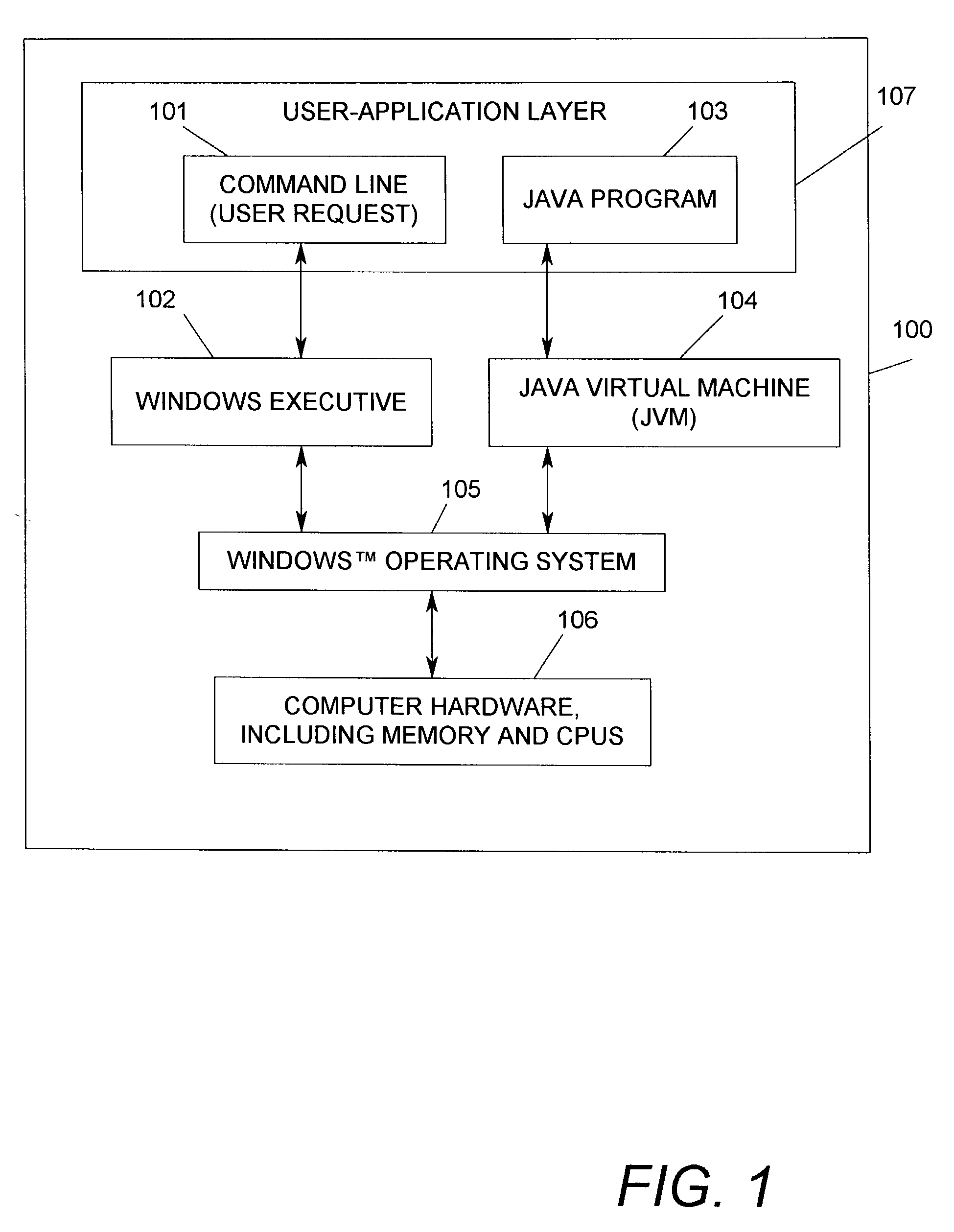Method and system for managing distribution of computer-executable program threads between central processing units in a multi-central processing unit computer system
a computer system and computer system technology, applied in the field of multi-central processing unit computer systems, can solve the problems of reducing the effectiveness of smp for faster processing, affecting the overall performance of the computer, and unable to accommodate all the program data and instructions required for the execution of a typical task, so as to increase the number of available cpus and reduce the sharing of data
- Summary
- Abstract
- Description
- Claims
- Application Information
AI Technical Summary
Benefits of technology
Problems solved by technology
Method used
Image
Examples
Embodiment Construction
[0025]Several embodiments of the present invention are described herein in the context of a multi-CPU computer system. Those of ordinary skill in the art will realize that the following description of the present invention is illustrative only and is not intended to be in any way limiting. Other embodiments of the invention will readily suggest themselves to such skilled persons having the benefit of this disclosure. Reference will now be made in detail to an implementation of the present invention as illustrated in the accompanying drawings. The same reference numbers will be used throughout the drawings and the following description to refer to the same or like parts.
[0026]In the interest of clarity, not all of the routine features of the implementations described herein are described. The present invention may be practiced in conjunction with various other practices in the context of multi-CPU computer systems having memory caches shared amongst its central processing units that ...
PUM
 Login to View More
Login to View More Abstract
Description
Claims
Application Information
 Login to View More
Login to View More - R&D
- Intellectual Property
- Life Sciences
- Materials
- Tech Scout
- Unparalleled Data Quality
- Higher Quality Content
- 60% Fewer Hallucinations
Browse by: Latest US Patents, China's latest patents, Technical Efficacy Thesaurus, Application Domain, Technology Topic, Popular Technical Reports.
© 2025 PatSnap. All rights reserved.Legal|Privacy policy|Modern Slavery Act Transparency Statement|Sitemap|About US| Contact US: help@patsnap.com



